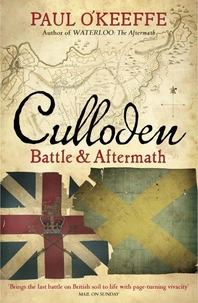A vivid and visceral portrayal of the most famous naval battle in history, focusing on the human cost of war, by a brilliant military historianAt or about 1.15 in the afternoon of 21 October 1805, Vice Admiral Horatio Nelson was struck by a 22-gramme, 15-millimetre French musket round fired down from the mizzen top of the Redoutable, a distance of some 70 feet to HMS Victory's quarter deck. It nicked the edge of his epaulette, and passed diagonally down, through the material of his coat and into the left shoulder, fracturing the upper part of the scapula or shoulder blade, then the second and third rib.
It pierced the left lung, dividing a branch of the pulmonary artery, and emerged to sever the spine, splintering the sixth and seventh vertebrae above and below as it crashed between. The soft lead ball - distorted by collisions with bone - ended its flight embedded in muscle two inches below the right scapula. In this fresh and visceral retelling of the battle of Trafalgar, Paul O'Keeffe traces the course of events both prior and subsequent to that fatal shot: from about 6.30 in the morning, as the British ships began their slow approach towards the combined French and Spanish fleet, until the cessation of firing that followed the apocalyptic destruction of the French 74-gun Achille at 5.45 in the afternoon.
But we also learn about the battle's dramatic aftermath: how a violent storm that raged for eight days destroyed the surviving French and Spanish ships and drowned more sailors than had been killed during battle; how news of victory travelled and was celebrated in London; how Nelson's body was brought home and given a spectacular funeral. Paying meticulous attention to the peripheral - and little explored - details, O'Keeffe gives us a front-row view of events; and in his unflinching portrayal of the brutal reality of naval warfare, he tells the story of the human cost of war.
Gripping and immersive, this is a unique account of Trafalgar for a new generation of readers.
A vivid and visceral portrayal of the most famous naval battle in history, focusing on the human cost of war, by a brilliant military historianAt or about 1.15 in the afternoon of 21 October 1805, Vice Admiral Horatio Nelson was struck by a 22-gramme, 15-millimetre French musket round fired down from the mizzen top of the Redoutable, a distance of some 70 feet to HMS Victory's quarter deck. It nicked the edge of his epaulette, and passed diagonally down, through the material of his coat and into the left shoulder, fracturing the upper part of the scapula or shoulder blade, then the second and third rib.
It pierced the left lung, dividing a branch of the pulmonary artery, and emerged to sever the spine, splintering the sixth and seventh vertebrae above and below as it crashed between. The soft lead ball - distorted by collisions with bone - ended its flight embedded in muscle two inches below the right scapula. In this fresh and visceral retelling of the battle of Trafalgar, Paul O'Keeffe traces the course of events both prior and subsequent to that fatal shot: from about 6.30 in the morning, as the British ships began their slow approach towards the combined French and Spanish fleet, until the cessation of firing that followed the apocalyptic destruction of the French 74-gun Achille at 5.45 in the afternoon.
But we also learn about the battle's dramatic aftermath: how a violent storm that raged for eight days destroyed the surviving French and Spanish ships and drowned more sailors than had been killed during battle; how news of victory travelled and was celebrated in London; how Nelson's body was brought home and given a spectacular funeral. Paying meticulous attention to the peripheral - and little explored - details, O'Keeffe gives us a front-row view of events; and in his unflinching portrayal of the brutal reality of naval warfare, he tells the story of the human cost of war.
Gripping and immersive, this is a unique account of Trafalgar for a new generation of readers.

 , qui est-ce ?
, qui est-ce ?